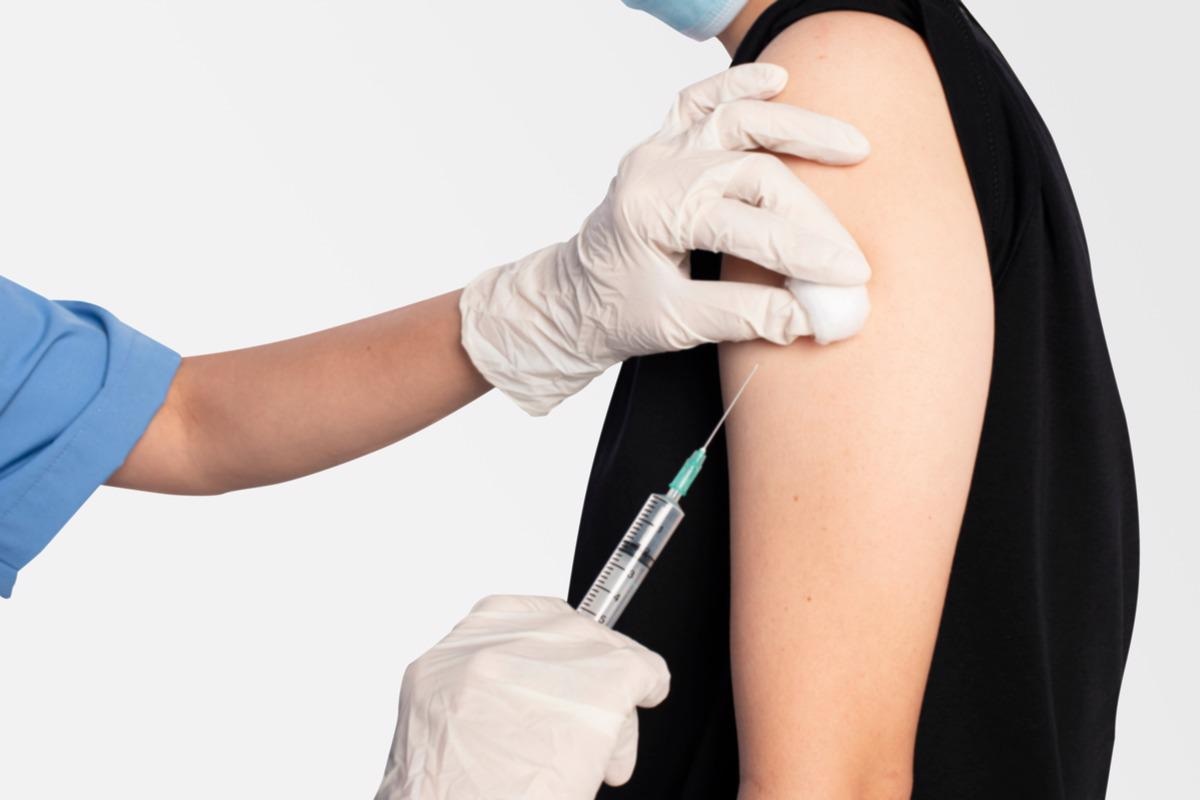is depakote safer than lithium

In a recent study posted to the medRxiv* preprint server, researchers assessed the safety profile and immunogenicity of a heterologous NVSI-06-08 boost against severe acute respiratory syndrome coronavirus 2 (SARS-CoV-2) variants in individuals doubly vaccinated with the inactivated vaccine BBIBP-CorV.

Background
The decline of coronavirus disease 2019 (COVID-19) vaccine-induced immune responses against SARS-CoV-2 strains warrants the need for booster doses to restore and enhance the protective serological immunity. NVSI-06-08 vaccine comprises a trimeric antigen with mutation-integrated receptor-binding domain (RBDs) of the spike (S) protein of the prototype, Kappa, and Beta strains. Thus, NVSI-06-08 is a hybrid vaccine with efficacy against the three SARS-CoV-2 strains.
About the study
In the present study, researchers conducted a randomized, controlled, side effects of ic sucralfate phase 2 clinical trial to evaluate the immunogenic potency and safety of the heterologous NVSI-06-08 vaccine booster in inactivated BBIBP-CorV vaccine recipients.
Over 1800 participants, aged over 18 years, were recruited for the study. They were divided into three groups of 600 individuals, each with differing prime-boosting time intervals: four-six months, seven-nine months, and greater than nine months. A total of 200 blood samples from heterologous boosted participants (n=99) and homologous boosted controls (n=101) were obtained 15 days post-vaccine boosting. The primary outcomes were immunogenicity and safety, whereas the exploratory outcome was cross-protective immunity against SARS-CoV-2.
The neutralizing antibody and immunoglobulin G (IgG) titers were quantified using the live-virus neutralization assay and the chemiluminescence enzyme immunoassay, respectively. Additionally, the immune response against SARS-CoV-2 Beta, Delta, and Alpha strains was determined.
All 1800 booster-vaccinated subjects comprised the Safety Set (SS) for safety assessment. Out of 1800 participants, 1678 without protocol deviations during follow-up comprised the Perprotocol set (PPS) to evaluate immunogenicity. Additionally, the geometric mean titers (GMT) and geometric mean concentrations (GMC) post homologous and heterologous boost were calculated 15- and 30-days post boosting.
Results
About 16% and 13% heterologous and homologous boosted subjects, respectively, reported a minimum of one solicited grade 2 or 1 adverse event within a week of boosting. The most common were pain at the site of injection. Systemic reactions reported were also graded 2 or 1 and comprised muscle pain, headache, fever, and fatigue. Grade 3 generalized side effects, including muscle pain and fever, were observed in only 0.2%, 0.5%, and 0.2% of participants boosted by homologous and heterologous vaccines, respectively. The unsolicited adverse reactions observed were cough, myalgia, and fever, most being grade 2 or 1. No one reported grade 4 adverse effects. This indicates that the NVSI-06-08 heterologous boost was well tolerated and had a safety profile similar to that of the homologous boost.
Significantly elevated IgG titers were detected against the viral prototype strain with both boosters. About 15 days post homologous boost, GMTs improved by 2.9-fold, 10.3-fold, and 21-fold in the four-six-months, seven-nine-months, and greater than nine months groups, respectively. On the other hand, those induced by heterologous boost increased by 40-fold, 94-fold, and 247-fold, respectively.
Correspondingly, the four-fold rates of the homologous boost were 23%, 75%, and 94% in four-six-month, seven-nine-month, and greater than nine-months, respectively. In contrast, those heterologous boosted were 94%, 98%, and 99.7%, respectively. These GMTs and four-fold rates increased further within a month of a booster vaccination. Notably, the heterologous boost antibody titers were substantially high in the seven-nine months and exceeding nine months groups with GMTs as high as 7719 against the wild-type strain in the seven-nine-months group.
Post 15 days of boosting, the anti-RBD GMCs improved by 49 to 63-fold post heterologous boost and two to three-fold by homologous boosting. Likewise, the heterologous boost four-fold increase was substantially higher than the homologous boost in all groups (91%-96% vs. 21%-32%).
A month post boosting, the heterologous boost IgG GMCs increased by 44-fold, 37-fold, and 41-fold in four-six-months, seven-nine-months, and greater than nine months groups, respectively. Correspondingly, the four-fold increase by heterologous boost was 95%, 92%, and 88%, respectively. Both the GMCs and four-fold increases were much higher after the heterologous boost.
The homologous boost GMTs was 45 for the Omicron strains, whereas the heterologous boost GMT against Omicron was maintained at a much higher level of 368. This indicates that the heterologous boost was more effective against the immune-evasive Omicron variant. Additionally, the heterologous boost GMTs were 11-fold, 15-fold, and 10-fold higher than homologous boosting against Alpha, Beta, and Delta strains, respectively.
The heterologous NVSI-06-08 booster was safe and immunogenic when administered six months post-primary vaccination with BBIBP-CorV and offers improved cross-protective immunity.
*Important notice
medRxiv publishes preliminary scientific reports that are not peer-reviewed and, therefore, should not be regarded as conclusive, guide clinical practice/health-related behavior, or treated as established information.
Kaabi, N. et al. (2022) "Safety and immunogenicity of a hybrid-type vaccine booster in BBIBP-CorV recipients: a randomized controlled phase 2 trial". medRxiv. doi: 10.1101/2022.03.08.22272062. https://www.medrxiv.org/content/10.1101/2022.03.08.22272062v1
Posted in: Medical Science News | Medical Research News | Disease/Infection News
Tags: Antibody, Antigen, Assay, Blood, Clinical Trial, Coronavirus, Coronavirus Disease COVID-19, Cough, covid-19, Efficacy, Enzyme, Fatigue, Fever, Headache, Homologous, Immune Response, immunity, Immunoassay, Immunoglobulin, Muscle, Mutation, Omicron, Pain, Protein, Receptor, Respiratory, SARS, SARS-CoV-2, Severe Acute Respiratory, Severe Acute Respiratory Syndrome, Syndrome, Vaccine, Virus

Written by
Pooja Toshniwal Paharia
Dr. based clinical-radiological diagnosis and management of oral lesions and conditions and associated maxillofacial disorders.
Source: Read Full Article